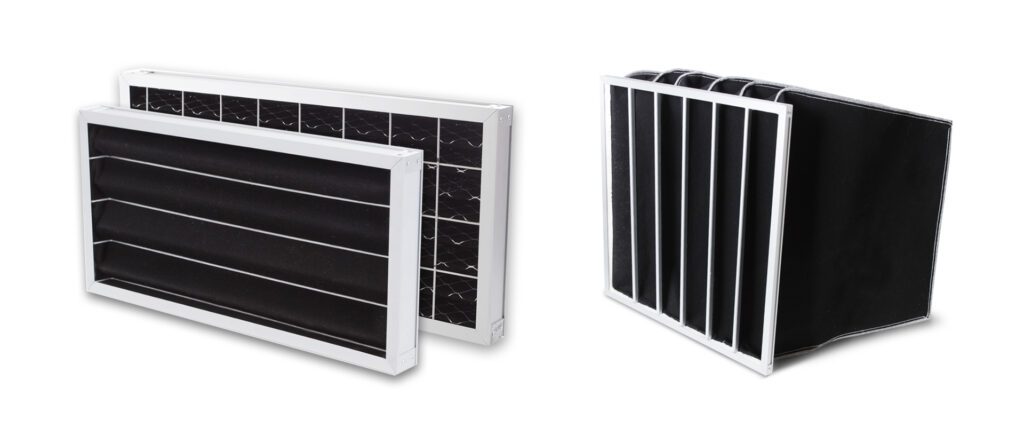Every day, we encounter unwanted odors. Whether from kitchen fumes, bathroom smells, formaldehyde from renovations, or industrial exhaust, these odors can make us uncomfortable and harm our health. Prolonged exposure may cause respiratory issues or allergic reactions. Activated carbon filters act as effective “odor eliminators,” removing smells and harmful gases to provide fresher air.
Various Types of Activated Carbon Filters
1. Pleated Air Filter
The pleated air filter features a sturdy aluminum or galvanized steel frame. Its protective mesh, made from painted or aluminum material, ensures durability. The media consists of 3mm or 5mm activated carbon cotton, acting like a sponge to absorb odors.
Activated carbon has a porous structure with countless adsorption sites. When odor molecules come into contact with the surface, they get trapped, neutralizing smells. This filter is perfect for capturing kitchen fumes and other indoor odors.
2. Frame-Type Filter
This filter uses an aluminum or galvanized steel frame, reinforced by a double-layer wire mesh for added support. It contains 5mm or 10mm activated carbon cotton, providing excellent odor absorption.
Frame-type filters suit central air systems and exhaust filtration. They efficiently handle acidic, alkaline gases, and odors, ensuring compliance with environmental standards.
3. Pocket Air Filter
The pocket air filter uses a similar frame design and contains 5mm activated carbon cotton, delivering excellent absorption capabilities.
It is ideal for air conditioning systems or exhaust outlets. The filter captures industrial emissions, including sulfur dioxide and nitrogen oxides, helping meet environmental regulations.

Broad Applications of Activated Carbon Filters
Homes and Commercial Spaces
In homes, activated carbon filters remove kitchen fumes and bathroom odors. One homeowner noted that after installing a filter in their kitchen, cooking fumes were significantly reduced, making meal preparation more comfortable. The bathroom filter also eliminated unpleasant odors.
In commercial spaces like hotels and offices, these filters control odors from crowds or renovation materials. A hotel manager reported that air quality improved in the lobby and rooms, increasing guest satisfaction and reducing complaints.
Industrial Exhaust Treatment
In factories, activated carbon filters reduce harmful gases like sulfur dioxide and nitrogen oxides. A chemical plant installed these filters at its exhaust outlets, significantly lowering pollutants and meeting environmental standards.
Improving Air Quality and Supporting Environmental Protection
Activated carbon filters play a vital role in enhancing air quality. They create healthier environments for living and working while contributing to environmental protection. These filters are also widely used in urban pollution control, reducing the impact of exhaust emissions.
Conclusion
Activated carbon filters are an effective solution for air purification. Whether in homes, commercial spaces, or industrial facilities, they act as silent “air guardians,” ensuring cleaner air and a healthier environment.
Have you ever used activated carbon filters? Share your experience with us!

